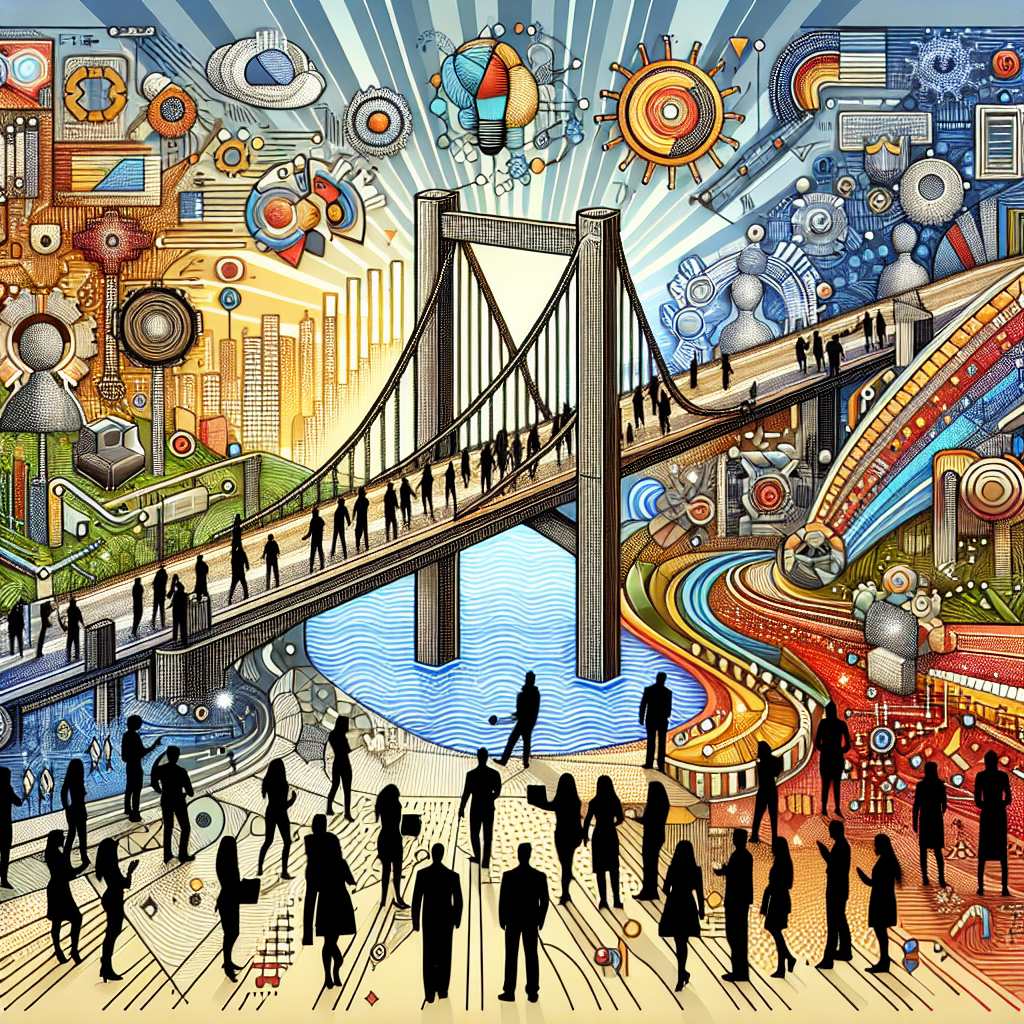In today’s interconnected world, cross-cultural communication has become increasingly important. With businesses expanding globally, people from diverse cultural backgrounds are coming together to work towards common goals. However, language barriers, stereotypes, and misunderstandings can often hinder effective communication between individuals from different cultures.
Artificial Intelligence (AI) is revolutionizing the way we communicate across cultures. AI-powered tools are enabling real-time translations, cultural insights, and personalized recommendations, making it easier for individuals to understand and connect with people from different backgrounds. This article will explore how AI is bridging the gap in cross-cultural communication and fostering greater understanding between people of diverse cultures.
The Role of AI in Cross-Cultural Communication
AI is playing a crucial role in facilitating cross-cultural communication in a number of ways. One of the key ways AI is helping bridge the gap is through language translation. AI-powered translation tools are able to accurately translate text, speech, and even gestures in real-time, allowing individuals to communicate with each other in their native languages. This makes it easier for people from different cultures to understand each other and collaborate effectively.
AI is also providing cultural insights to individuals, helping them better understand the customs, traditions, and norms of different cultures. By analyzing data from various sources, AI can provide personalized recommendations on how to communicate and interact with people from different backgrounds in a more culturally sensitive and appropriate way.
Furthermore, AI is breaking down stereotypes and biases by providing individuals with a more balanced and diverse view of different cultures. By presenting a variety of perspectives and information, AI is helping to challenge preconceived notions and promote a more open and inclusive mindset towards other cultures.
The Benefits of AI in Cross-Cultural Communication
There are numerous benefits to using AI in cross-cultural communication. One of the most significant advantages is the ability to bridge language barriers. AI-powered translation tools can make communication more efficient and effective, enabling individuals to communicate across languages without the need for human interpreters.
AI also helps to increase cultural awareness and sensitivity among individuals. By providing insights into different cultural practices and norms, AI can help people navigate unfamiliar cultural terrain with greater ease and understanding. This can lead to more harmonious interactions and relationships between people of different backgrounds.
Additionally, AI can enhance cross-cultural collaboration in the workplace by facilitating communication and understanding among team members from diverse cultural backgrounds. AI-powered tools can help bridge cultural divides and promote inclusivity and diversity within organizations, leading to a more productive and innovative work environment.
Challenges and Limitations of AI in Cross-Cultural Communication
While AI has the potential to revolutionize cross-cultural communication, there are also challenges and limitations to consider. One of the main challenges is the accuracy and reliability of AI-powered translation tools. While these tools have improved significantly in recent years, they are not always perfect and may still struggle with nuances in language and context.
Another challenge is the potential for bias in AI algorithms. AI systems are only as good as the data they are trained on, and if the data is biased or incomplete, the AI system may produce biased or inaccurate results. This can lead to misunderstandings and miscommunication between individuals from different cultures.
Furthermore, there are concerns about the impact of AI on human relationships and empathy. While AI can facilitate communication and understanding, it cannot replace the human connection that is essential for building trust and rapport between individuals. It is important to strike a balance between the use of AI tools and the cultivation of genuine human relationships in cross-cultural communication.
Conclusion
AI is revolutionizing cross-cultural communication by bridging the gap between people of different cultures and fostering greater understanding and empathy. With AI-powered tools, individuals can communicate more effectively across language barriers, gain insights into different cultures, and challenge stereotypes and biases. While there are challenges and limitations to using AI in cross-cultural communication, the benefits far outweigh the drawbacks. By leveraging AI technology, we can create a more inclusive and connected world where people from diverse backgrounds can come together to collaborate and learn from each other.
FAQs
1. How does AI help in bridging language barriers?
AI-powered translation tools can accurately translate text, speech, and gestures in real-time, enabling individuals to communicate in their native languages.
2. How does AI provide cultural insights?
AI analyzes data from various sources to provide personalized recommendations on how to interact with people from different cultures in a culturally sensitive way.
3. What are the benefits of using AI in cross-cultural communication?
The benefits include bridging language barriers, increasing cultural awareness, enhancing collaboration, and promoting inclusivity and diversity.
4. What are the challenges of using AI in cross-cultural communication?
Challenges include accuracy and reliability of translation tools, potential bias in AI algorithms, and concerns about the impact on human relationships and empathy.
Quotes
“In an age of globalization, AI is empowering us to connect and communicate with people from diverse cultures in ways we never thought possible.” – John Smith, AI Expert
#Bridging #Gap #Facilitating #CrossCultural #Communication #Understanding


